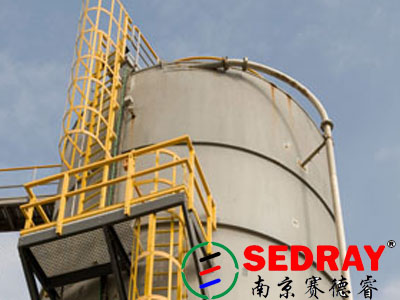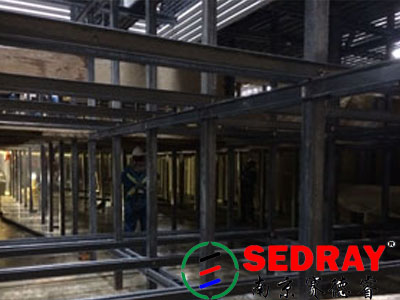2021-08-11
Fiberglass rebar can eliminate the risk of corrosion in concrete structures and improve sustainability, which meets the future new infrastructure requirements such as transportation, urbanization and extreme weather!
2023-09-14
Entering the post-epidemic era, global competition among enterprises continues to intensify and product homogenization becomes more serious. Enterprises are inevitably urged to continue to promote their "branding" process! The improvement of the "trademark brand matrix" is one of the core steps in this critical process!
2021-07-16
After nearly two months of redesign and planning, Nanjing Sedray Industries Co., Ltd. has re-launched its official website! Under the joint efforts of our staff and website designers, the director of each exhibition, analysis and optimization of the design scheme together, the new version of the website is more standardized, novel, product display more image, specific, welcome customers from all w...
2022-09-07
Since August, the northern hemisphere in the long time high temperature weather led to a serious of the multiple crises, including the energy crisis, so that the world's major economies urgently seeking to find more efficient way of energy saving in building energy efficiency, and fiberglass building products and fiberglass bolts which are important to the positive application of new materials, su...
2022-02-10
In winter, a large number of infrastructures face the double test of "low temperature and humidity",and how to maximize their life cycle under the background of "double carbon" has become a new topic that we have to face.
2021-10-08
The smooth realization of the "dual carbon" goal is an important milestone related to the sustainable development of our country and mankind, and the realization of this goal requires the country to double control the energy consumption policy must be strengthened layer upon layer, firmly control the high energy consumption and high emission projects. The "dual control" system refers to the dual control of total energy consumption and energy intensity. Specifically, the administrative regions of all provinces, autonomous regions and municipalities directly under the Central Government set targets for total energy consumption and energy intensity control and supervise and assess local governments at all levels.
On August 17, the report of 《the first half of 2021 regional energy consumption of the double control target completion barometer》issued by the National Development and Reform Commission stated that, from the decrease of strength of energy consumption, in the first half of 2021, qinghai, ningxia, guangxi, guangdong, fujian, xinjiang, yunnan, shaanxi, jiangsu nine provinces (area) energy intensity not fallen year-on-year rise, The reduction rate of energy intensity in 10 provinces has not met the required schedule, and the situation of energy conservation in China is grim. On September 16, the National Development and Reform Commission (NDRC) issued the Plan to Improve the Dual Control of Energy Consumption Intensity and Total Energy consumption, which provides a more perfect index setting and decomposition mechanism for the dual control of energy consumption, resolutely controls projects with high energy consumption and high emissions, and strictly implements the energy-saving review system.
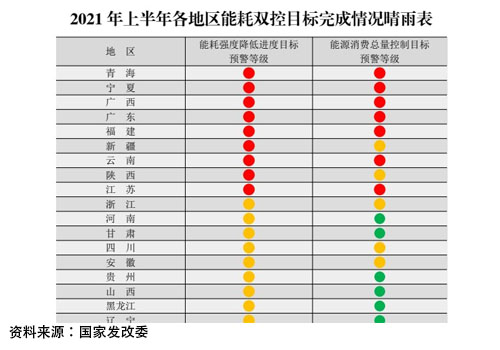
After the two documents were released, many regions whose energy-saving performance had been warned began to control energy consumption by suspending production and rationing electricity, in an effort to meet the annual target. Among them, Yunnan Provincial Development and Reform Commission issued a document on September 11, requiring industrial silicon and yellow phosphorus to reduce production by 90% and cement output by more than 80%. Jiangsu also conducted a comprehensive energy consumption of more than 50000 tons of 2021 special supervision enterprise action, involving petrochemical, chemical, coal, coking, iron and steel, building materials, non-ferrous, coal, textile, paper making, brewing and other industries, as a result, some soda enterprises starts fell 20% in jiangsu, some steel, aluminum enterprises has been discontinued. At the same time, Zhejiang issued a document to strengthen the structural adjustment of key energy-using areas, strictly control the capacity scale of petrochemical, steel, chemical and other industries, promote the textile printing and dyeing, chemical fiber, paper, rubber and plastic products, electroplating and other industries to exit, so as to relieve the high dependence on fossil energy. Guangdong Development and Reform Commission issued a document explicitly requiring that, focusing on steel, chemical, non-ferrous metals, cement, glass and other "two high" industries, the suspension of energy conservation review of glass, non-ferrous metals, chemical and other projects, to ensure the completion of this year's double control of energy consumption, especially the target task of reducing energy intensity.
Suddenly, the impact of power and production restrictions gradually extended to important industrial and agricultural production materials, such as pesticides, fertilizers, cement, steel, aluminum, plastics, textile fabrics, paper and other raw materials prices rose rapidly, and the production and procurement pressure of manufacturers upstream and downstream of the industrial chain increased rapidly. All racking their brains to find ways to reduce production costs, reduce energy consumption, and try to maintain the necessary corporate profit margins!
In the production process and link of these important industrial and agricultural means of production, it is inevitable that they often come into contact with acid, alkali, salt, organic solvent and other strong corrosive media, and the economic loss caused by corrosion in Our country is more than 100 billion yuan a year. Especially in the corrosive environment of the building, structure corrosion is still a very difficult problem. This kind of corrosion is often ignored in the past, resulting in some old factory buildings appear more serious corrosion. For example, chemical fertilizer production in nitric acid, ammonium nitrate, urea plant; workshop, floor, trestle, platform and underground structure of wet electrolysis workshop in non-ferrous metallurgy production. Due to the volatilization of acid fog, dust flying, running and dripping, deliquescence and other reasons, the buildings are seriously corroded. In some parts, 10mm thick steel structural parts are corroded so that it is difficult to bear the load in a year and must be replaced. For the corrosion protection of steel structural parts, at present, the main domestic use of anti-corrosion coating, plastering, spraying, lining rubber, wrapping FRP, lining lead and even lining titanium plate, these measures are not satisfactory because of low protection effect or high cost.
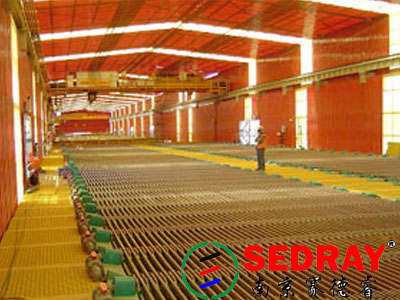
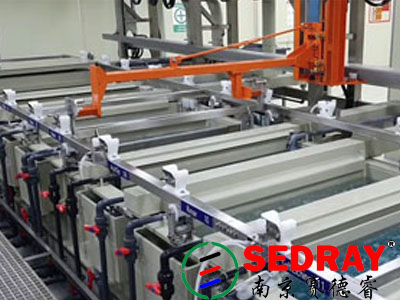
Dragonpro™ FRP building Products (including standard structural profiles, FRP handrail systems, FRP decks & floors, FRP gratings and accessories) and Dragonbolt™ Composite fasteners (fiberglass threaded rod, FRP bolt and nut, washer) manufactured by Nanjing Sedray Industries Co., LTD used corrosion resistant, flame retardant high performance materials by pultrusion process, moulding process, mechanical processing production, FRP building materials products and composite fasteners, compared with ordinary structure material has high strength, light weight, strong and corrosion resistant, insulating heat insulation, and the installation does not need to use electric welding and other open fire, during the use of the collision will not produce sparks, this is particularly important for chemical production, and in some requirements of "prevent charge aggregation" special production environment, we can also by adding "antistatic" material to achieve the control of charge aggregation. At present, our FRP building materials and composite fasteners have been used as structural bearing parts in the following chemical anti-corrosion engineering: 1. Operation platform of purification section of cobalt electrolysis workshop; 2, Chemical fertilizer workshop operation platform, trestle, enclosure, roof, etc.; 3. Operation platform and aisle platform of zinc leaching workshop; 4, Aluminum electrolysis workshop anode precipitation tank support.
